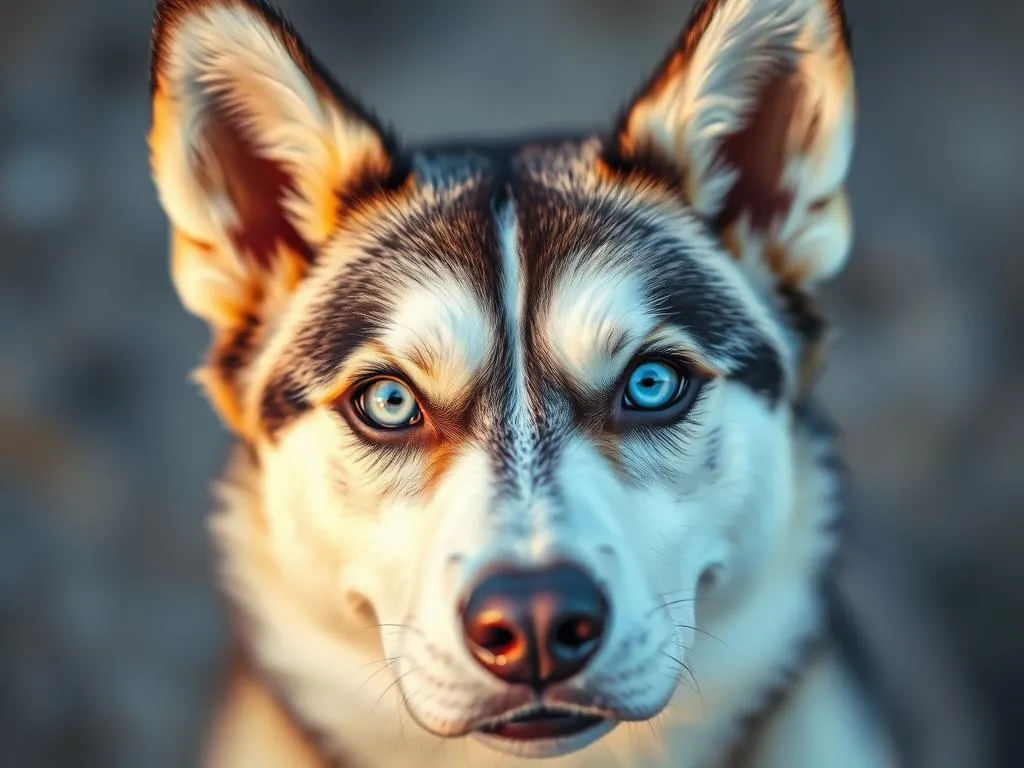
Siberian Huskies are one of the most beloved dog breeds around the globe, known for their striking appearance and energetic personalities. One of the most captivating features of these dogs is their eyes, which can range from deep blue to vibrant amber, or even a mix of colors. Many prospective and current Husky owners often wonder, do Huskies’ eyes change color? This article delves into the fascinating world of eye color in Huskies, exploring the reasons behind any changes and what you can expect as your furry friend ages.
Understanding Siberian Huskies
Origins and Characteristics
Siberian Huskies were initially bred by the Chukchi people in Siberia for pulling sleds over long distances. This breed is known for its endurance, strength, and friendly demeanor. They typically have a medium-sized build, with a thick double coat designed for cold weather, erect triangular ears, and striking facial markings. One of the most notable traits is their eyes, which can be blue, brown, or amber, and some even exhibit heterochromia, a condition where one eye is a different color from the other.
The Significance of Eye Color
In addition to their aesthetic appeal, eye color in Huskies carries cultural significance. Blue eyes are often associated with a wild and adventurous spirit, while brown eyes are perceived as warm and approachable. Heterochromia, particularly common in Huskies, adds an element of uniqueness that captivates dog lovers. However, many misconceptions surround the idea of eye color change, leading to questions about whether it’s normal for Huskies to experience such changes.
Eye Color Changes in Dogs
Natural Eye Color Variations
Eye color in puppies can be quite different from that of adult dogs. Most puppies are born with blue eyes, which may change as they grow. Factors influencing the initial eye color include genetics and pigmentation levels. In many breeds, including Huskies, the final eye color usually settles between 6 to 12 weeks of age.
Common Reasons for Eye Color Changes
Age-Related Changes
As dogs age, their eyes can undergo various changes, much like humans. In Huskies, a gradual fading of eye color can occur, shifting from a vibrant blue to a lighter shade or even amber. These changes are generally considered normal and are not a cause for concern.
Health Conditions
Certain medical conditions can lead to changes in eye color. Conditions like cataracts or glaucoma can cause the eyes to appear cloudy or take on a different hue. If you notice sudden changes in your Husky’s eye color, it’s essential to consult a veterinarian to rule out any underlying health issues.
Environmental Factors
Environmental elements play a crucial role in the appearance of a dog’s eyes. Prolonged exposure to sunlight can sometimes lighten eye color, while harsh chemicals in the environment may lead to discoloration. Therefore, protecting your Husky from extreme conditions is vital for maintaining healthy eyes.
Specifics about Huskies and Eye Color Changes
Do Huskies’ Eyes Really Change Color?
Do Huskies’ eyes change color? Yes, they can, but it’s essential to understand that not all Huskies will experience this phenomenon. According to experts, while the primary eye color typically stabilizes within the first few months of life, some changes can occur due to the factors discussed earlier. For example, an older Husky might develop a lighter shade of blue or even shift towards amber as they age.
What to Expect as Your Husky Ages
As your Husky matures, you may observe subtle changes in eye color. For instance, a puppy with striking blue eyes may retain that color into adulthood, while others might develop a different hue. It’s essential to monitor these changes, as significant shifts could indicate health issues that require veterinary attention.
Heterochromia in Huskies
Heterochromia is relatively common in Siberian Huskies, and it adds to their allure. This condition can manifest in two ways: complete heterochromia, where each eye is a different color, and sectoral heterochromia, where one eye has multiple colors. Famous Huskies like “Togo” and “Balto” have become icons partly due to their striking heterochromatic eyes, showcasing the breed’s unique genetic traits.
How to Care for Your Husky’s Eyes
Regular Eye Check-Ups
Just like any other part of your dog’s health, regular eye check-ups are crucial for maintaining good vision and eye health. Annual veterinary visits can help detect any potential issues early, ensuring that your Husky remains healthy throughout its life.
Signs of Eye Problems
As a responsible pet owner, you should be aware of the signs that your Husky may be experiencing eye problems. Common symptoms include:
- Excessive tearing or discharge
- Cloudiness or changes in color
- Squinting or avoiding bright light
- Redness or swelling around the eyes
If you notice any of these symptoms, consult your veterinarian immediately.
Protective Measures
Protecting your Husky’s eyes from environmental hazards can prevent issues before they arise. Here are some practical tips:
- Limit exposure to harsh sunlight: During peak hours, try to keep your Husky in shaded areas.
- Use protective eyewear: If your Husky enjoys outdoor activities, consider specialized dog goggles to shield their eyes from debris and UV rays.
- Maintain a clean environment: Regularly clean your dog’s living area to minimize exposure to allergens and irritants.
FAQs about Huskies and Eye Color
Can all Huskies have blue eyes?
Not all Huskies will have blue eyes, though it is a common trait. They can also have brown or amber eyes, or a combination of colors due to heterochromia.
Is it normal for a Husky to have one blue eye and one brown eye?
Yes, it is perfectly normal for a Husky to have one blue eye and one brown eye. This uniqueness, known as heterochromia, adds to their charm and is a recognized trait within the breed.
At what age do Huskies’ eye colors typically settle?
Huskies’ eye colors usually settle between 6 to 12 weeks of age. However, some dogs may experience slight changes as they grow older.
Are there specific breeds with similar eye color changes?
Yes, other breeds such as the Australian Shepherd and the Border Collie can also experience eye color changes, particularly if they have heterochromia or are exposed to similar environmental factors.
Conclusion
Understanding whether Huskies’ eyes change color can help ease the minds of many dog owners. While some changes can occur naturally as their dogs age, it’s essential to differentiate between normal variations and potential health issues. Regular veterinary check-ups, being aware of eye health signs, and taking protective measures will help ensure your Husky’s eyes remain bright and healthy throughout their life. Always consult with a veterinarian if you have concerns about any noticeable changes in your dog’s eye color or overall health.
By being proactive about your Husky’s eye care, you can enjoy many happy years together, celebrating the unique beauty of this incredible breed.









